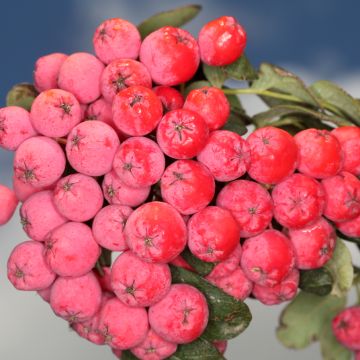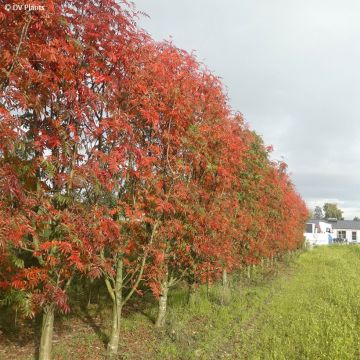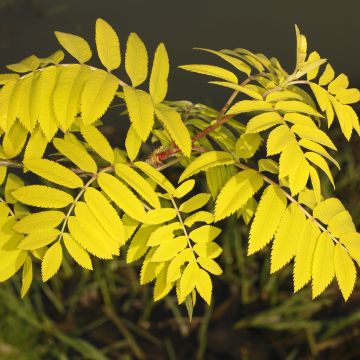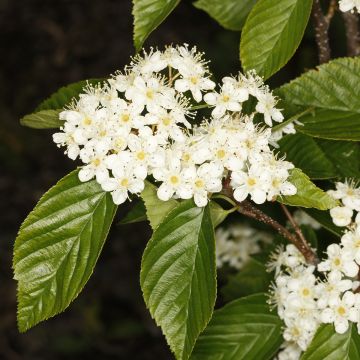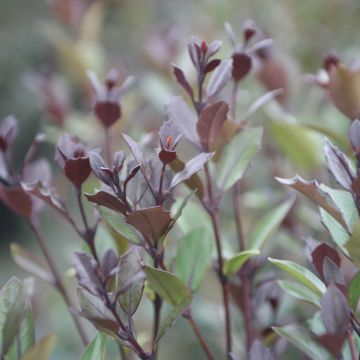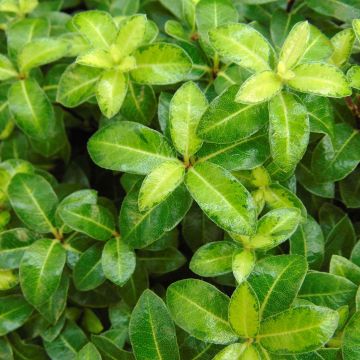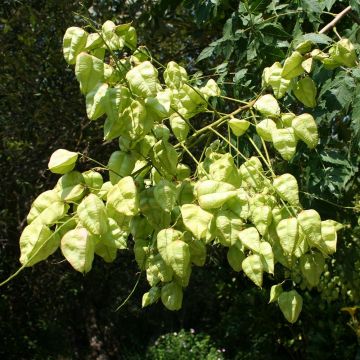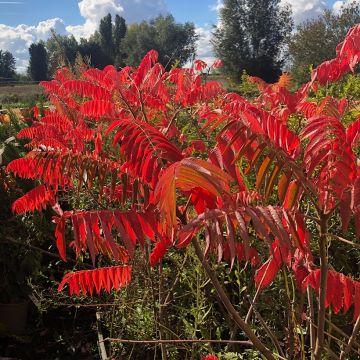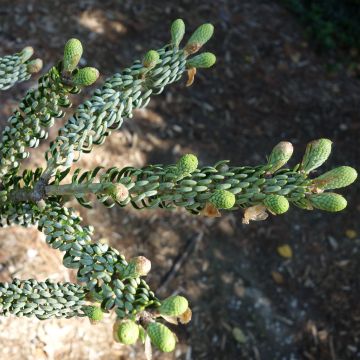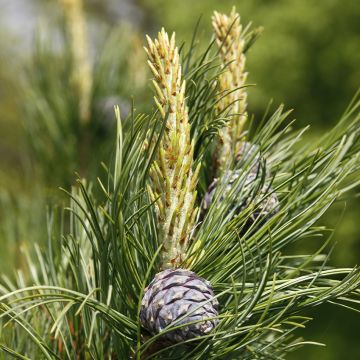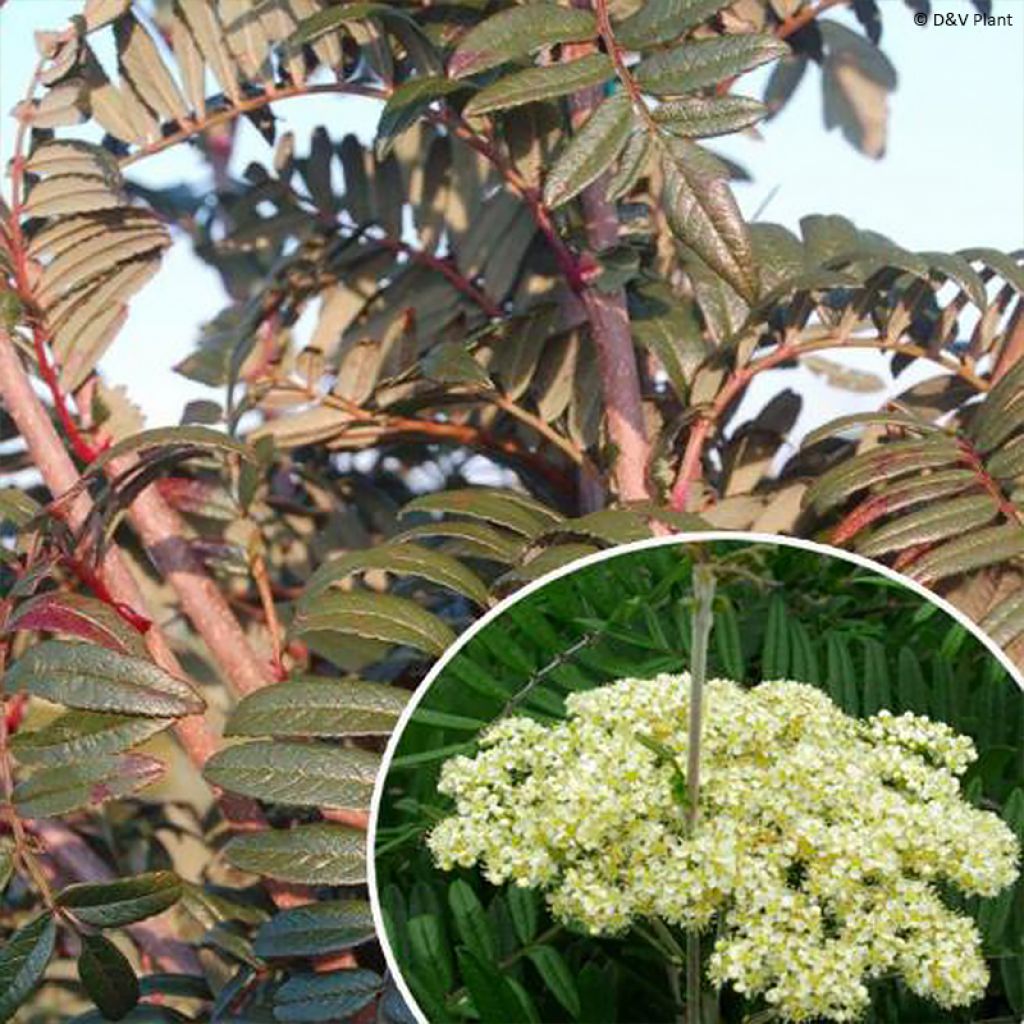

Sorbus scalaris - Sorbier à feuilles de fougère
Sorbus scalaris
Sorbus scalaris
Ladder Leaf Rowan, Fern-leafed Sorbus, Chinese Mountain Ash
Very pleased to have found these quite rare plants on the market, Sorbus scalaris and dodong. Fast delivery, plants in impeccable condition. Pleasant surprise. We will wait for the growth in spring, but it looks promising!
Henry , 27/11/2024
Special offer!
Receive a €20 voucher for any order over €90 (excluding delivery costs, credit notes, and plastic-free options)!
1- Add your favorite plants to your cart.
2- Once you have reached €90, confirm your order (you can even choose the delivery date!).
3- As soon as your order is shipped, you will receive an email containing your voucher code, valid for 3 months (90 days).
Your voucher is unique and can only be used once, for any order with a minimum value of €20, excluding delivery costs.
Can be combined with other current offers, non-divisible and non-refundable.
Home or relay delivery (depending on size and destination)
Schedule delivery date,
and select date in basket
This plant carries a 24 months recovery warranty
More information
We guarantee the quality of our plants for a full growing cycle, and will replace at our expense any plant that fails to recover under normal climatic and planting conditions.

Would this plant suit my garden?
Set up your Plantfit profile →
Description
The Sorbus scalaris, also known as the Alternate-leaved Rowan, is a beautiful botanical species native to the mountains of southwest China. Still relatively unknown to gardeners, this modestly-sized tree offers an elegant silhouette, generous white flowering in spring, decorative fruiting, and gorgeous autumn colours. Elegant and ornamental for eight months of the year, and beautifully coloured at the end of the season, this small rowan tree is ideal for small gardens or in large landscaped areas.
The Sorbus scalaris belongs to the Rosaceae family. This small tree grows in forests in the west of Sichuan and Yunnan, at altitudes between 1600 and 3000 m (5249 and 9842ft), and is perfectly hardy. Its habit is spreading, with a fairly short vertical trunk topped by an open, flared crown. With a moderately fast growth rate, it will reach approximately 4 m (13ft) in height and 3 m (10ft) in width at maturity. The deciduous foliage appears in spring and falls in autumn. It is composed of long pinnate leaves arranged alternately. Each leaf is composed of numerous narrow, slightly leathery leaflets, shiny on the upper surface. The summer foliage is dark green. In autumn, it takes on magnificent rust colour, then red, and finally purple hues. From May to June, a multitude of small white honey-scented flowers appear in dense, wide clusters. In September, they give way to beautiful clusters of bright orange fruits that turn red when mature, remaining decorative until winter. These 1 cm (1in) diameter berries are a delight for birds, especially thrushes, who love them.
This charming alternate-leaved rowan, with its moderate growth, is well suited to small gardens as well as larger spaces. Its ornamental qualities make it a perfect choice near the house, either as a standalone specimen or in a mass planting. However, beware of its fruits, as they may stain the patio! It can also be used in the background of flower beds, alone or mixed with other species with autumn foliage, such as Prunus, hazels, caramel trees, parrotias, or maples. Tall grasses like Miscanthus, a Rhamnus frangula Asplenifolia, and a few orange Helianthus or chrysanthemums look fantastic until late in the season. Rowan trees have shallow roots, and it is not uncommon to see a mature tree toppled by a storm. Therefore, avoid placing it too close to buildings and in exposed locations.
Sorbus scalaris in pictures
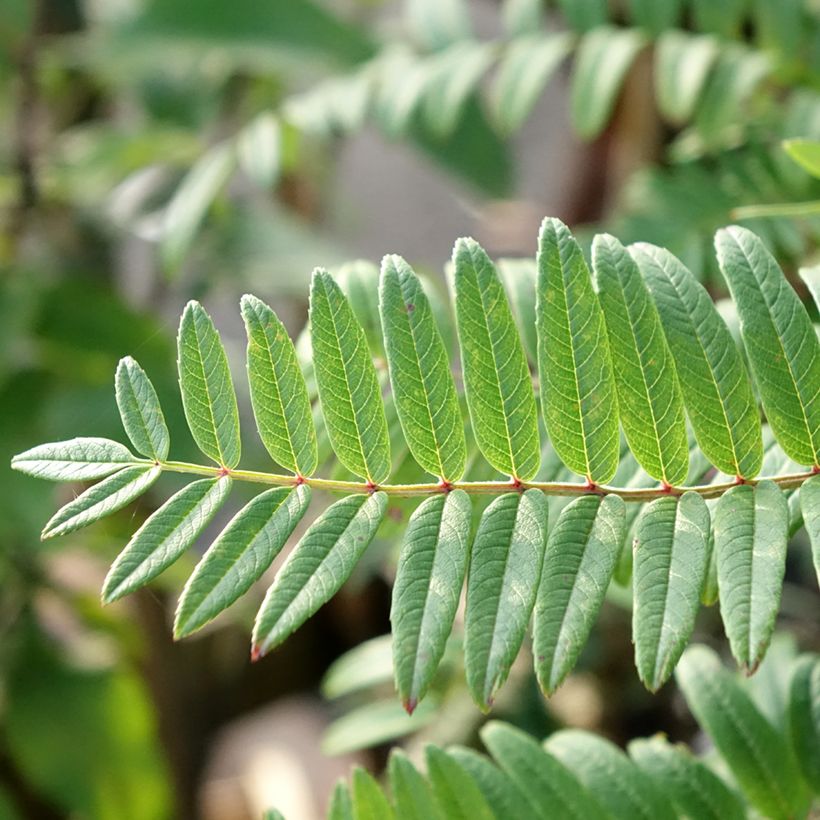

Plant habit
Flowering
Foliage
Botanical data
Sorbus
scalaris
Rosaceae
Ladder Leaf Rowan, Fern-leafed Sorbus, Chinese Mountain Ash
China
Other Sorbus - Mountain Ash
View all →Planting and care
The Sorbus scalaris is preferably planted in autumn. It thrives in the sun but can be in partial shade for the day. It is a small tree that doesn't like scorching exposure or excessive heat. Place it sheltered from prevailing winds to prevent uprooting. It appreciates deep, humus-rich soil that is moist but well-drained and not too chalky. Water it during very dry periods. Remove dead wood or diseased branches. At the end of winter, prune, if necessary and before vegetation resumes, the inner branches that cross and keep only the vigorous branches to maintain the proper habit of the tree.
Mites, aphids, and scale insects are the main enemies of the Sorbus scalaris. Powdery mildew and sooty mould can also affect this tree.
Planting period
Intended location
Care
Planting & care advice
-
, onOrder confirmed
Reply from on Promesse de fleurs
Similar products
Haven't found what you were looking for?
Hardiness is the lowest winter temperature a plant can endure without suffering serious damage or even dying. However, hardiness is affected by location (a sheltered area, such as a patio), protection (winter cover) and soil type (hardiness is improved by well-drained soil).

Photo Sharing Terms & Conditions
In order to encourage gardeners to interact and share their experiences, Promesse de fleurs offers various media enabling content to be uploaded onto its Site - in particular via the ‘Photo sharing’ module.
The User agrees to refrain from:
- Posting any content that is illegal, prejudicial, insulting, racist, inciteful to hatred, revisionist, contrary to public decency, that infringes on privacy or on the privacy rights of third parties, in particular the publicity rights of persons and goods, intellectual property rights, or the right to privacy.
- Submitting content on behalf of a third party;
- Impersonate the identity of a third party and/or publish any personal information about a third party;
In general, the User undertakes to refrain from any unethical behaviour.
All Content (in particular text, comments, files, images, photos, videos, creative works, etc.), which may be subject to property or intellectual property rights, image or other private rights, shall remain the property of the User, subject to the limited rights granted by the terms of the licence granted by Promesse de fleurs as stated below. Users are at liberty to publish or not to publish such Content on the Site, notably via the ‘Photo Sharing’ facility, and accept that this Content shall be made public and freely accessible, notably on the Internet.
Users further acknowledge, undertake to have ,and guarantee that they hold all necessary rights and permissions to publish such material on the Site, in particular with regard to the legislation in force pertaining to any privacy, property, intellectual property, image, or contractual rights, or rights of any other nature. By publishing such Content on the Site, Users acknowledge accepting full liability as publishers of the Content within the meaning of the law, and grant Promesse de fleurs, free of charge, an inclusive, worldwide licence for the said Content for the entire duration of its publication, including all reproduction, representation, up/downloading, displaying, performing, transmission, and storage rights.
Users also grant permission for their name to be linked to the Content and accept that this link may not always be made available.
By engaging in posting material, Users consent to their Content becoming automatically accessible on the Internet, in particular on other sites and/or blogs and/or web pages of the Promesse de fleurs site, including in particular social pages and the Promesse de fleurs catalogue.
Users may secure the removal of entrusted content free of charge by issuing a simple request via our contact form.
The flowering period indicated on our website applies to countries and regions located in USDA zone 8 (France, the United Kingdom, Ireland, the Netherlands, etc.)
It will vary according to where you live:
- In zones 9 to 10 (Italy, Spain, Greece, etc.), flowering will occur about 2 to 4 weeks earlier.
- In zones 6 to 7 (Germany, Poland, Slovenia, and lower mountainous regions), flowering will be delayed by 2 to 3 weeks.
- In zone 5 (Central Europe, Scandinavia), blooming will be delayed by 3 to 5 weeks.
In temperate climates, pruning of spring-flowering shrubs (forsythia, spireas, etc.) should be done just after flowering.
Pruning of summer-flowering shrubs (Indian Lilac, Perovskia, etc.) can be done in winter or spring.
In cold regions as well as with frost-sensitive plants, avoid pruning too early when severe frosts may still occur.
The planting period indicated on our website applies to countries and regions located in USDA zone 8 (France, United Kingdom, Ireland, Netherlands).
It will vary according to where you live:
- In Mediterranean zones (Marseille, Madrid, Milan, etc.), autumn and winter are the best planting periods.
- In continental zones (Strasbourg, Munich, Vienna, etc.), delay planting by 2 to 3 weeks in spring and bring it forward by 2 to 4 weeks in autumn.
- In mountainous regions (the Alps, Pyrenees, Carpathians, etc.), it is best to plant in late spring (May-June) or late summer (August-September).
The harvesting period indicated on our website applies to countries and regions in USDA zone 8 (France, England, Ireland, the Netherlands).
In colder areas (Scandinavia, Poland, Austria...) fruit and vegetable harvests are likely to be delayed by 3-4 weeks.
In warmer areas (Italy, Spain, Greece, etc.), harvesting will probably take place earlier, depending on weather conditions.
The sowing periods indicated on our website apply to countries and regions within USDA Zone 8 (France, UK, Ireland, Netherlands).
In colder areas (Scandinavia, Poland, Austria...), delay any outdoor sowing by 3-4 weeks, or sow under glass.
In warmer climes (Italy, Spain, Greece, etc.), bring outdoor sowing forward by a few weeks.




































